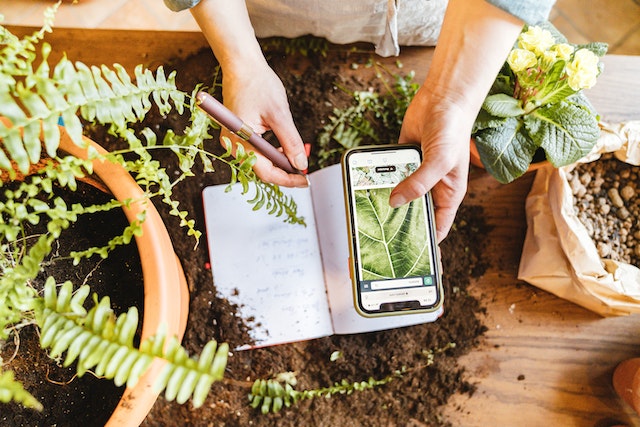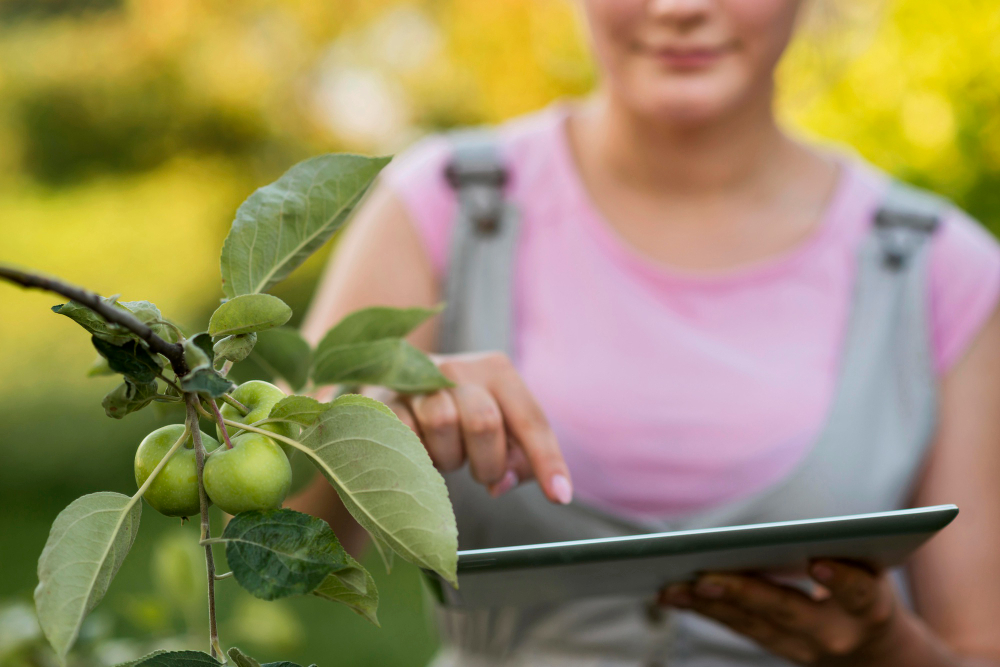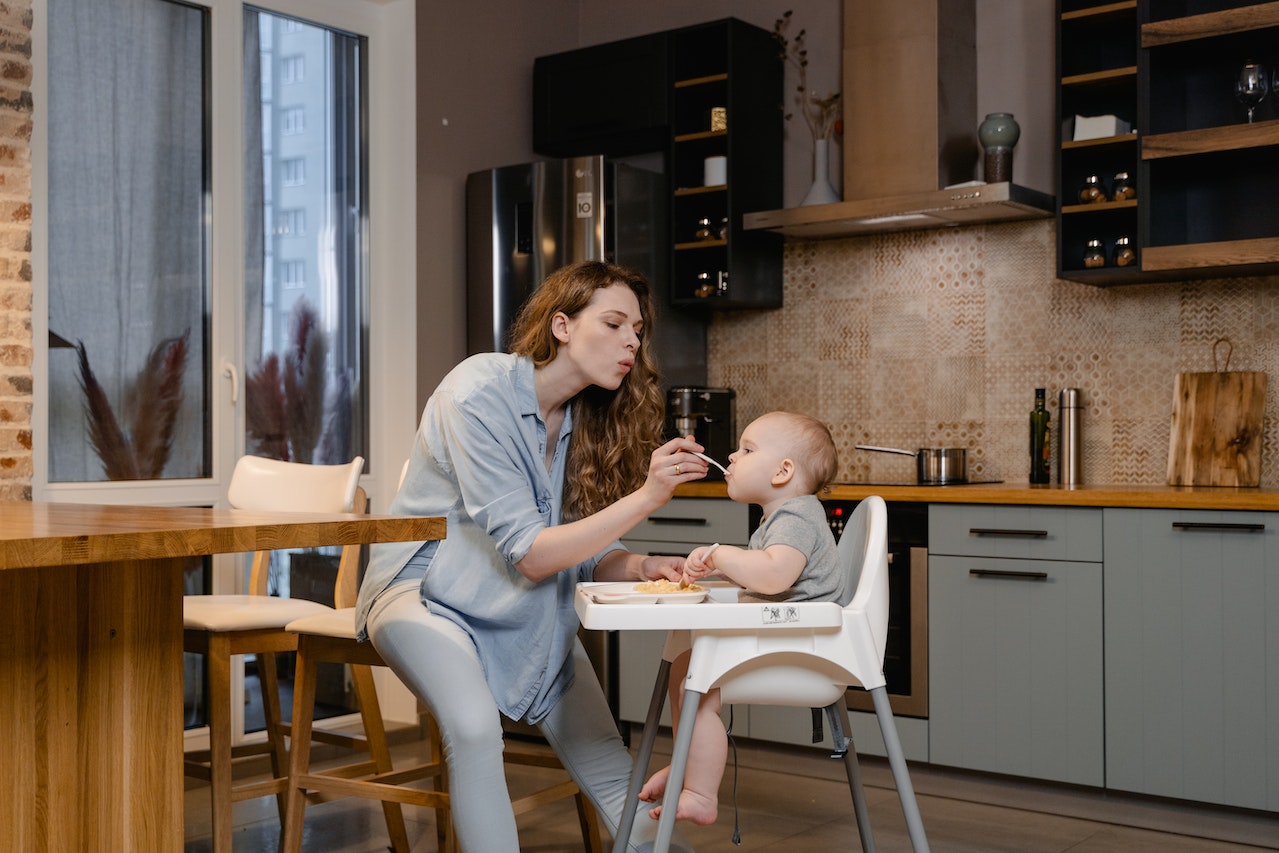Gardening is a great way to relieve stress, beautify your home, and grow your own food. If you’re new to gardening, it’s easy to be overwhelmed by everything you have to do to grow a healthy, vibrant garden. You’ll need to find the right combination of sunlight, soil, and water for your plants to thrive. Luckily, there are a number of apps and smart tools you can use to create a smart garden.
From self-watering planters to gardening apps, learn more about how to keep your smart garden blooming and growing.
What is a smart garden?
Smart gardening is simply taking advantage of the technology surrounding you in your daily life and using smart techniques. For example, there are many apps available to track things like watering schedules, plant types, and fertilizer applications. If you’re interested in investing in smart technology for your garden, you can use tools such as smart pest control systems or irrigation systems. These tools are especially beneficial if you have a large vegetable or flower garden.
Smart irrigation saves you time. Rather than dragging a garden hose around the yard in an effort to hit all of your plants, consider an irrigation system with a smart timer. Investing in an irrigation system ensures water is regularly delivered directly to your plants’ root systems. Smart irrigation systems handle this crucial chore, even when you’re out of town on vacation.
Not only will you enjoy more growth and better harvests, but you’ll also waste less water by operating on a schedule. By relying on technology to take care of just a few common gardening chores, you’ll free up your schedule. You don’t need an extremely high-tech garden if you choose the right tools.
Who is smart gardening for?
A smart garden can help just about anybody, from established farmers to beginner houseplant parents. If you live in an apartment and only have space for a few potted plants on the balcony, you may not benefit from large smart garden tools, but there are still plenty of options for you.
Smart gardening applies to all sorts of gardening tools, from self-watering planters to fertilizer robots. Even using a virtual garden planner can be beneficial for families growing their own food, new homeowners designing a landscape, or farmers figuring out what to do in the kitchen garden this year.
Whether you’re interested in starting a raised vegetable garden or finding out how not to kill your next cactus, there’s a smart gardening tool that can help improve your green thumb.
How tech is changing the gardening game
As technology improves, it simplifies many of the time-consuming tasks required for a bountiful garden harvest. Thanks to the internet, beginner gardeners have constant access to gardening tips and advice.
Extension offices are able to post to social media, educating gardeners on what to grow in their specific zones for each season. Apps can remind you when your houseplants need water based on plant type. If you find an unknown plant growing in your yard, you can take a picture and use an app to identify it.
Before the internet, you either needed someone to teach you about gardening, or you had to check out books, attend classes, or join gardening clubs. The internet has leveled the playing field, so gardeners of all different experience levels can learn and share information.

Tips on building your smart garden
Just like with a regular garden, measure how much space you have available. If you’re starting an outdoor vegetable garden, knowing the square footage is crucial. The square footage tells you how much dirt you need and approximately how many plants you can fit in the space. If you’re not certain how to calculate the square footage, use a virtual garden planner to see how many plants will fit in the space. You can even figure out when to rotate crops for the highest yield.
If you’re in an apartment and don’t have a balcony, there are plenty of smart garden choices for you. Vertical indoor planters are becoming more popular and accessible. These planters come with irrigation and light systems, giving your lettuce, herbs, and tomatoes everything they need right inside your house.
If you already have an established garden but want to incorporate some smart tools, start small. You don’t need to go all in on smart irrigation systems, pest control, smart mowers, and weeders all at once. Pick your least favorite garden chore and let technology take care of it.
Smart gardening tools
If you’re still not sure where to start, here’s a list of the top five gardening tool picks:
- Smart sprinkler controllers: If you don’t want to install a whole new irrigation system, the sprinkler controller is a good place to start. These controllers help avoid overwatering. They’ll keep your lawn fresh and your garden vibrant, all with a tap from the connected app on your phone.
- Pre-programmed robotic lawn mowers: Stay inside on a hot summer day and still trim the grass with these robotic lawn mowers. Set a schedule and a grass height, and let the robot do the work.
- Grow lights: High-quality grow lights are great for seed starting and managing the light conditions in your home for houseplants. Countertop planters with built-in grow lights let you enjoy fresh herbs all year long.
- Hydroponics grow systems: Hydroponics is a way of gardening indoors without using soil. By relying on water and grow mediums instead, you’ll encounter fewer pests and enjoy beautiful plants.
- Plant sensors: There are plenty of options for sensor-based gardening that measure the growing conditions in your home or garden. Some are very simple and show soil moisture and light strength, while others provide more details, like soil acidity levels.
Smart garden apps
If you have trouble planning or keeping to a watering schedule, these are the top five app picks for you:
- Plant identification apps: Apps like PictureThis tell you exactly what’s growing in your garden, which is especially helpful if you tend to throw out the plastic tags that come with nursery pots. These apps can also stop you from clearing out a patch of poison ivy without gloves.
- Garden planning apps: What should you plant and when? There are a number of garden planning apps to help you figure that out. Some, like Moon & Garden, tell you when to plant your crops by tracking the phases of the moon. Others take into account your hardiness zone and a plant’s native environment to give you the optimal planting times.
- Soil apps: Test the pH balance of your soil. Amending soil can take years, and if the soil in your yard has turned into dirt (soil that’s lost its nutrients), you might be better off investing in raised garden beds.
- Watering apps: Even a cactus needs water now and then. Different plants have different watering needs. Use an app to keep track of when to water your plants so they can keep thriving.
- Journal apps: Apps like Garden Journal help you keep all your notes in one convenient place. Look back to previous seasons to see what worked for your garden and what failed. Even master gardeners refer back to their notes to see how to manage crop rotation, pests, and what to plant where.

Smart gardening techniques
Learn more about smart gardening techniques:
- Crop rotation: By moving crops from one location to another each season, you’ll give the soil a chance to refresh and diversify. Farmers use crop rotation to avoid tiring out their land. You can use crop rotation in your own garden, too. For instance, never plant zucchini or squash in the same bed the next year. By relocating your squash plants each season, you’ll reduce the risk of squash bugs eating them.
- Successive sowing: To get the most out of that packet of radish seeds, plant one batch, wait a couple of weeks, and then plant more seeds next to your original spot. This way, you’ll get the highest yield out of fast-growing plants. This is especially useful for cool-season plants, like radishes, broccoli, and lettuce, so you can get a better harvest before the summer heat sets in.
- Educate yourself: There are plenty of online resources to guide you through the growing season. Follow other gardeners on apps or ask your local extension office for guidance on pest control or invasive plant species. Most gardeners are happy to share any information they have, whether online or in person.
- Smart irrigation: Water, light, and soil are the three factors that determine the success of your garden. Whether you invest in a fully automated irrigation system, underground sprinklers, or a remote attached to a regular sprinkler, keeping your plants properly hydrated is key.
- Watch the weather: You can have a great garden all planned out, only to get hit with a late-season freeze, a week of rainstorms, or a month-long drought. Weather can throw all sorts of curveballs into your smart gardening plans, so it’s important to know what the forecast looks like to keep your plants thriving.
More ways to incorporate tech in your garden
There are many tools available to gardeners today. Some plant-identifying apps let you keep track of animals and birds in addition to plants. You can even view and share data from other local gardeners, using their advice to optimize plant growth.
Learn even more smart garden techniques on apps like Instagram and Tik Tok. Plenty of gardeners are using social media to share their gardening tips and tricks – and learn new tricks, too.
Companion planting is another smart gardening technique that’s been around for centuries. Native Americans used this technique when planting the Three Sisters: corn, pole beans, and pumpkins or winter squash. Companion planting means pairing plants with other beneficial plants. In the case of Three Sisters, the cornstalks give the pole beans support while they climb. Beans provide much-needed nitrogen to the squash and pumpkins. Squash and pumpkins vine along the ground, suppressing weeds and protecting the corn and beans.
Companion planting also protects your plants from pests. Nasturtium protects cabbage and brassicas from caterpillars, and planting a border of marigolds around your vegetable beds attracts pollinators while deterring other pests.
If you’re running out of space for companion plants, consider vertical gardening to maximize space. Try low-tech options, like turning a wood pallet into a vertical herb garden or upside-down tomato planters. You can also invest in high-tech plant towers that enable indoor use.
If you want to add beneficial flowers to your vegetable gardens, hanging baskets from shepherd hooks is another space-saving vertical option. Vegetables like tomatoes, cucumbers, and peppers all flower. By planting native pollinators like zinnias or coneflowers near your vegetable garden, you’ll attract more bees, moths, and butterflies – and enjoy higher yields on your vegetable plants.

Having a smart garden can be as high-tech as automated irrigation systems or as traditional as companion planting. Beginner gardeners, farmers, and hobbyists alike can all benefit from smart apps, techniques, and tools. Enjoy beautiful blooms and gorgeous produce by using a few of these smart techniques and tools in your garden this season. Remember, your garden is an extension of your home, so incorporating smart techniques can not only enhance its beauty but also make it a more efficient and enjoyable space for you to relish.




